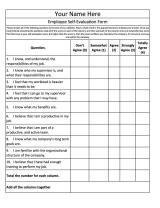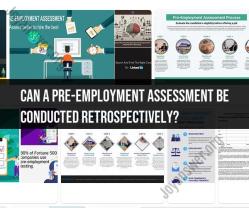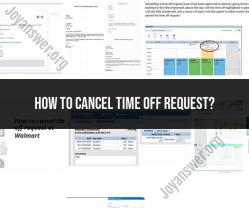How do I make a time off request?
Making a time off request as an employee typically involves following your company's specific procedures and policies. Here's a general guide on how to make a time off request:
Review Company Policies: Familiarize yourself with your company's time off policies and procedures. These policies often include information on how to request time off, notice periods, maximum concurrent leaves, blackout dates, and any required forms or documentation.
Check Your Leave Balances: Ensure you have enough accrued paid time off (PTO), vacation days, or other types of leave to cover your requested time off. You can typically find your leave balances on your pay stub or by checking with your HR department.
Plan Your Request: Determine the dates you wish to request time off. Be as specific as possible, including the start and end dates, and indicate whether you need a full day off or a partial day off (e.g., a half-day).
Submit Your Request: Follow your company's preferred method for submitting time off requests. This may involve using HR software, an online portal, or filling out a paper request form. Be sure to provide all the necessary information, including the dates, the reason for your request, and any other required details.
Provide Adequate Notice: Submit your time off request with ample notice, especially if your company has specific notice requirements. This allows your manager and team to plan accordingly. Keep in mind that certain times of the year, such as holidays or busy seasons, may have stricter notice periods.
Communicate with Your Manager: If your request is related to a critical project or will result in a staffing shortage, it's a good practice to discuss your request with your manager before submitting it formally. This proactive communication can help address any concerns or challenges.
Be Flexible: Be prepared for the possibility that your initial request may not be approved, especially if there are scheduling conflicts or if too many employees have requested time off for the same period. Be open to discussing alternative dates or solutions with your manager.
Check for Confirmation: After you've submitted your request, check for confirmation from your manager or HR department. They may approve your request immediately or need some time to review it. Ensure that you receive written confirmation.
Plan for Your Absence: If your request is approved, make any necessary arrangements for your absence. Inform colleagues of your absence and delegate tasks or responsibilities as needed. Ensure that your work is up to date or that others can cover your duties.
Follow Up: As the requested time off approaches, remind your manager and colleagues about your upcoming absence and confirm any arrangements made for covering your responsibilities.
Enjoy Your Time Off: During your approved time off, try to relax and recharge. Avoid checking work emails or taking work-related calls unless it's absolutely necessary for your role.
Return as Planned: Ensure you return to work as scheduled and notify your manager if you experience any unexpected delays or issues that may affect your return date.
Remember that the specific process for requesting time off may vary depending on your company's policies and practices. Always adhere to your company's guidelines and communicate openly with your manager to ensure a smooth process and to maintain a positive working relationship.
Requesting Time Off: A Step-by-Step Guide
- Review your company's time off policy. Make sure that you are familiar with the company's time off policy and that you understand the different types of time off that are available to employees, as well as the procedures for requesting and approving time off.
- Submit your request in writing. Most companies require employees to submit time off requests in writing. This may be done via email, through an online portal, or on a paper form.
- Include all relevant information in your request. Be sure to include the following information in your time off request:
- The type of time off you are requesting
- The dates of the requested time off
- The reason for your request (if required)
- Provide adequate notice. Give your manager as much notice as possible when requesting time off. This will give them time to make necessary adjustments to staffing and workload.
- Be flexible. If possible, be flexible with your request. If your manager is unable to approve your requested dates, be willing to work with them to find other dates that work for both of you.
Making a Time Off Request: Procedures and Tips
Here are some additional procedures and tips for making a time off request:
- Choose the right time to make your request. Avoid making your request during busy times or when there are important deadlines approaching.
- Be professional and respectful in your request. State your request clearly and concisely, and be polite and respectful.
- Be prepared to answer questions. Your manager may have questions about your request, such as why you are requesting time off or how you plan to cover your workload while you are gone. Be prepared to answer these questions honestly and completely.
- Follow up with your manager. Once you have submitted your request, follow up with your manager to ensure that they have received it and to discuss the status of your request.
How to Request Time Off: The Employee's Guide
By following these tips, you can increase your chances of having your time off request approved. Remember to be professional, respectful, and flexible in your request.













